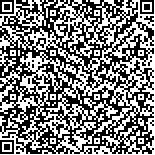| 摘要: |
| 基于静态推靠式旋转导向(SRS)钻井工具的结构和工作原理,建立SRS钻井工具受力分析模型,给出防止导向翼肋自锁的倒角优化设计方法。结合实例分析井底实际钻压随导向翼肋前倒角变化,以及前倒角上限随导向翼肋推靠力和名义钻压上限变化。结果表明:导向翼肋与井壁台阶是否自锁与导向翼肋倒角设计、钻井参数(推靠力、钻压)及井壁摩擦系数有关;井底实际钻压随导向翼肋前倒角增加而迅速减小;前倒角上限随推靠力之和增大而减小、随名义钻压上限增大而增大、随侧倒角增大而略有减小;对于Φ216 mm井眼中使用的SRS钻井工具,推荐导向翼肋前倒角45°左右,侧倒角45°~60°,侧倒角较大时还应适当减小前倒角。 |
| 关键词: 旋转导向钻井系统 静态推靠式 受力分析 自锁 倒角 优化设计 |
| DOI:10.3969/j.issn.1673-5005.2017.05.009 |
| 分类号::TE 122.14 |
| 文献标识码:A |
| 基金项目:国家自然科学基金项目(51674284);国家科技重大专项(2016ZX05022-002) |
|
| A design method to prevent self-locking of a static push-the-bit rotary steerable drilling tool |
|
SHI Yucai1, SUN Haifang2, YUE Bujiang3, GUAN Zhichuan1, WANG Heng1, MIAO Zaiqing1
|
|
(1.School of Petroleum Engineering in China University of Petroleum, Qingdao 266580, China;2.Drilling & Production Technology Research Institute of Chuanqing Drilling Company Limited, PetroChina, Guanghan 618300, China;3.Aerospace Science and Industry Inertial Technology Company Limited, Beijing 100074, China)
|
| Abstract: |
| In this study, according to the structure and working principle of a static push-the-bit rotary steerable (SRS) drilling tool, analytical models of the loading condition and force balance of the SRS drilling tool have been figured out, and a method to optimize the front chamfer design was established, which can prevent the self-locking risk of SRS system effectively. In a case study, the variations of the actual weight-on-bit (WOB) due to the front chamfer, the variations of the front chamfer due to the total pushing forces and the maximum nominal WOB were analyzed. The results show that whether the steerable pads run into a self-locking state against the ladders on wellbore wall is dependent on the front chamfers, the drilling parameters (i.e. the total pushing force and weight-on-bit) and the friction coefficient. The actual WOB decreases with the front chamfer quickly. The maximum front chamfer decreases with the total pushing force sharply, but it increases with the maximum nominal WOB rapidly, and decreases with the side chamfer slightly. For the SRS drilling tool in a Φ216 mm wellbore, the recommended front chamfer is of 45°or so, and the recommended side chamfer is between 45° to 60°, and a larger side chamfer should be matched to a smaller front chamfer. |
| Key words: rotary steerable drilling system static push-the-bit force state analysis self-locking chamfer optimization design |

